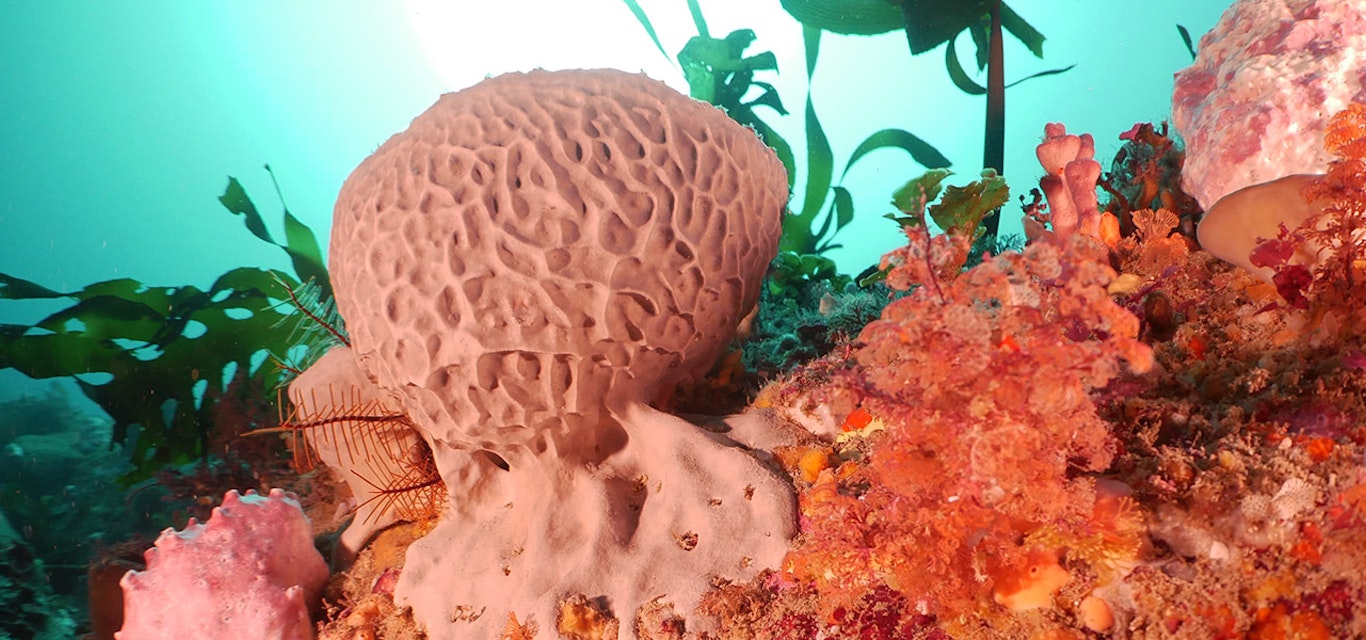The best dive spots in Tassie
These diving sites that can be visited in an afternoon or turned into an underwater weekend adventure.
Kingston Beach
Between the Kingston Beach boat ramp and Boronia Beach you will find the perfect shallow reef for a night dive. With a small sloping reef running onto the sand flats, there is the perfect mix of reef critters that come out at night. From rock lobsters to stargazers, seahorses, squid, pygmy leatherjackets, side-gilled slugs, toadfish, starfish, Shaw's cowfish, and one of my favourites, the bobtail squid. There is so much to see and so many subjects for photographers.
Mistaken Cape, Maria Island
With a large portion of northern Maria Island a marine protected area, and the back of the island opening up into the Tasman Sea, there are some spectacular diving sites that can only be accessed by boat. Mistaken Cape is known for its lush kelp and the magnificent deep sponge gardens. Colourful reefs may not be something that usually pops into your head when thinking about temperate, cold-water diving, particularly in Tasmania. Nevertheless, the sponge gardens and huge colonies of zooanthids off Maria Island sparkle in shades of bright oranges, pinks and yellows. This site is perfect for scuba divers or technical divers. Darlington Jetty, which is also part of the reserve, provides a brilliant snorkelling site, with the pylons covered in stunning jewel anemones. Just to the right of the jetty, many species can be found hidden within and darting through the kelp, including sleeping draughtboard sharks.
Sandy Bay and Battery Point
The Derwent River is home to Tasmania's critically endangered spotted handfish. Although not renowned for its visibility, if you are a patient diver, shore diving along Sandy Bay and around to Battery Point may give you the opportunity to dive with a fish found nowhere else in the world. These iconic fish use their fins to move and appear as if they are walking along the sea floor. Along with the spotted handfish, you can find a variety of other species including seahorses, sea hares, sponge crabs and ascidians, just to name a few.
Waterfall Bay, Tasman Peninsula
With the largest sea cave system in Australia, Waterfall Bay on the Tasman Peninsula hosts incredible dive sites, including Cathedral Cave. You can often find magnificent weedy seadragons, beautiful sponge gardens, huge schools of butterfly perch, lush kelp habitats and, if you are lucky, a visit from seals or dolphins. If you are spending the day diving on the Peninsula in October to December and March to June, you may also witness whales on their migratory route to and from Antarctica.
Olivia has been exploring the hidden gems of the ocean for more than 10 years. She has travelled the world diving and researching in some of the most beautiful locations after being named the 2018 Australasian Rolex Scholar of the Our World Underwater Scholarship Society. Follow her journey on Instagram @__livjohnson.
